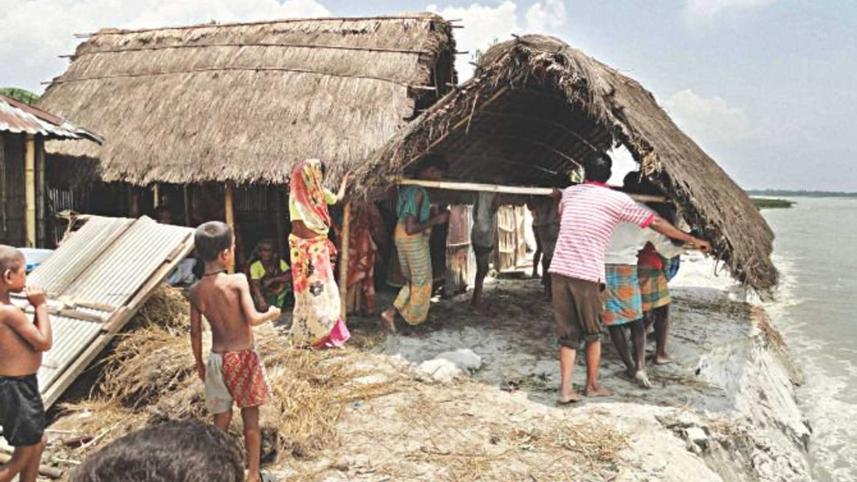Save our schools from the rivers

Erosion is a common phenomenon in Bangladesh, particularly in its northeastern region, where much of the annual flooding occurs. The question, thus, is why this is not factored into the plans of our authorities, when they approve construction of permanent structures in areas that are prone to river erosion. We broach this issue because, according to a report in this daily, 11 primary schools in the districts of Kurigram and Lalmonirhat were recently washed away by the Teesta and Dharla rivers. As a result, classes are now being conducted in makeshift tin-shed structures. Needless to say, such structures lack the basic facilities of a school and are not conducive to conducting classes. Both students and teachers face considerable distress in the schools. One can imagine the dismay of these students, who, after a break of more than a year and a half due to the Covid-19 pandemic, went back to their schools—only to find them devoured by the river.
While the locals and the teachers of the respective schools deserve our compliments for taking the initiative to raise funds and put up the tin-shed classrooms for temporary schooling, we wonder why the administration is absent in it. One would have expected that the primary education officers of the districts would come forward with not only resources and manpower for construction, but also suitable plots of khas land for the temporary schools.
That being the case, the more important aspect of the issue is: What should be done to ensure that education is not disrupted during emergencies such as floods, cyclones, and erosion? It's worth noting here that, while other areas of post-disaster mitigation action have received attention, the issue of children's access to education in the midst of a disaster or after a disaster has not been adequately addressed. The local authorities need to consider the problem of erosion and keep it in mind while selecting spots for construction of school buildings.
We also suggest that the government initiates an emergency education support system, so that schools in the areas vulnerable to erosion or other natural phenomena can rebuild or relocate when such disasters occur, without having to worry about funds or continuation of their activities. Responsible sections of society can also join such an initiative. That would, hopefully, lessen the distress that students face following such accidents.



 For all latest news, follow The Daily Star's Google News channel.
For all latest news, follow The Daily Star's Google News channel.
Comments